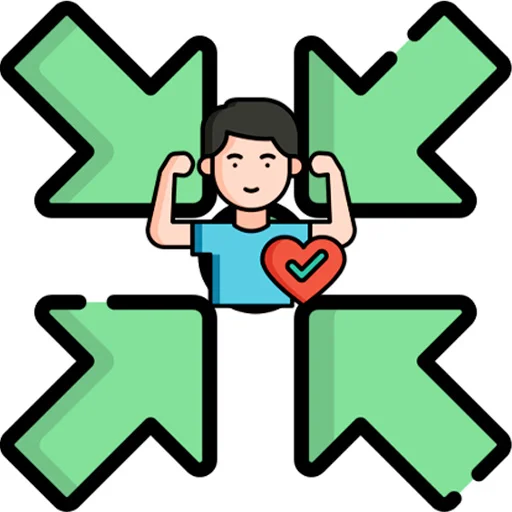
Patient education plays a key role in patient outcomes1 however it is often overlooked due to time constraints and patient shock at diagnosis, resulting in worst-case scenarios for the patient. A good example of this is diabetes. By managing diabetes, patients can prevent the worsening of the condition, and complications such as the need for a foot amputation. Nevertheless, almost 8,000 diabetes-related amputations are still conducted every year in the UK2. Why does this happen, if it is so preventable?

How informed a patient is will shape the trajectory or their journey, their treatment, and their interaction with their healthcare professionals (HCP). On the one hand, if patients are not informed, they can struggle to understand the causes and effects of their condition, the impact of the treatment and how their own lifestyle changes could affect their journey and recovery. This is particularly important for the 1 in 3 adults living with multiple chronic conditions3, as these are often both complex and require increased focus on the side of patients for effective management. On the other hand, a lack of patient awareness also creates challenges for the HCP, as they struggle to maintain patient compliance with monitoring visits and treatment engagement. Without effective education, patient needs suffer.
Patient education needs to be improved to positively impact patient outcomes. However, as HCPs have limited time to offer additional services to patients, manufacturers have the opportunity to play a big role in supporting patients from the start and throughout their journeys, becoming a life-long value partner.
Patients experience a significant life shift during diagnosis
Being diagnosed with a chronic condition brings forward several obstacles for the patient. Firstly, patients must understand their situation and what the course of treatment entails. This is often combined with the psychological need for an acceptance of the disease or ailment, as most patients experience shock, anxiety, depression and worry at the beginning of their journey4.
Additionally, patients must accept that the course of their life may now turn out differently. For example, in the case of diabetes, patients need to make adjustments to their diet. In the case of vascular disease, they have to give up certain physical hobbies. In the case of an ostomy, they have to adjust basic daily necessities. A large part of this relates to understanding the causes of their condition and how making changes in their lifestyle can help improve their health and prevent themselves from worsening.
Patients have a lot to ramp-up on about their condition, however, the majority of patients have low awareness and understanding of their ailment. Sector & Segment’s research has identified that this is not only the case at diagnosis but even years after living with the condition. As a result, patients do not make sufficient life adjustments and significantly hinder their health outcomes. These are the most common challenges that we have identified throughout our work in the healthcare sector.
At the beginning of their journey, patients often receive a lot of material, which naturally results in them becoming overwhelmed. These patients may not process all the information and may have difficulty remembering key aspects once home from the doctor.
At the same time, HCPs have a lot to communicate to the patient at this time. In some cases, HCPs may see that the patient is overwhelmed and may not cover every topic in depth or from every nuance. In other cases, HCPs may simply forget to cover some of the peripheral health topics (such as nutrition) if they are not the essential treatment. In some cases, if the information is not understood immediately by the patient, it can cause complications to a procedure or treatment.
Sector & Segment conducted a multi-country project where we spoke with patients who developed surgical wound dehiscence following an operation. We observed that all the patients who experienced this complication were unlikely to have a deep understanding of what was expected of them post-surgery. Patients could not recall any specific advice from their HCP – which could have been resting, not smoking or drinking alcohol, eating healthily or not touching the wound. Consequently, these patients clearly could not understand how their behaviour resulted in a surgical incision not healing but were also unaware that their actions would have affected this outcome. This causes patients to disengage from their recovery and lose trust in their HCPs as well as the products that they are using for their treatment.
With some conditions, treatment alone is not enough – understanding and reversing the cause of the problem is essential. This is the case with chronic ulcers – while there is treatment for the wound itself, the main necessity is to treat the underlying condition which is causing the ulcer (e.g. diabetes or vascular insufficiency). By not treating the cause and only the wound, the patient can expect the ulcer to recur.
Sector & Segment conducted research across 4 countries which focused on the behaviour of patients with chronic ulcers. It was observed that awareness and understanding about the underlying condition was a key element missing across most interviewees. The research found that less than 10% of patients could confidently say that they understood the link between the underlying condition and how it has caused their ulcer. The remaining patients were not confident and could not explain the connection, and therefore were not following all the treatment recommendations for the underlying condition. Some of these patients had had their ulcers for over 2 years, but were still struggling to understand the cause and the treatment. The sample contained a variety of ages, work status, professions, and education levels, with no clear link found to the patient’s background. Without this awareness, patients are stuck in an endless loop with their chronic wounds, as they are not targeting the cause of the problem. The longer they are stuck in the loop, the less trust they have in the brands they are using for their treatment and the more likely they are to abandon the treatment altogether, potentially blaming the quality of the product and not their compliance levels.
One common issue seen with patients is them believing that “the worst case will not happen to me”. Patients often misunderstand how important it is for them to change their lifestyle after being diagnosed with a chronic condition. In most cases, the symptoms of the disease appear slowly, hence patients struggle to grasp the real impact of the diagnosis and often fail to make significant changes quickly enough.
While researching the diabetes patient journey, Sector & Segment heard from nurses in multiple countries that patients who are diagnosed with type 2 diabetes often struggle to understand how dangerous their diagnosis really is. The symptoms are often detected through routine blood tests and patients rarely feel a large difference in their daily lives. For example, it has been proven often that if patients lose a significant amount of weight, then they may be able to reverse the diagnosis5. However, given the lack of will and understanding from patients, this occurs infrequently.
Likewise, patients who severely mismanage their diabetes can develop diabetic foot ulcers which can result in amputation – a drastic complication all patients are taught about. However, wound care nurses comment that they regularly see patients with diabetic foot ulcers who have tried to treat it at home with aloe vera, only coming to see an HCP months later when the wound has significantly deteriorated. If patients were guided to treatment earlier on in their journey, they may be more inclined to follow the treatment and use the products available for their treatment, improving their outcomes and quality of life.
Once the initial shock after the diagnosis subsides, curious and proactive patients may decide to begin conducting their own research on the condition, which mostly involves online research. Patients trust reliable sources such as government healthcare websites or patient association materials – however there is also a lot of other misleading information on the internet which could point the patient in the wrong direction, such as websites which may have the word “health” in the title but don’t have HCP backing.
Sector & Segment has observed oncologists across many markets complain that cancer patients believe that “sugar feeds cancer”, after reading this online. Happening upon this information, patients cut down on their eating and begin to lose weight. In reality, a consistent calorie intake is important for cancer treatment as the patient will require this energy to recover6. Oncologists spend a large proportion of their monitoring sessions “debunking” this myth and convincing patients to continue their normal eating habits.
It would be logical to assume that those patients who conduct online research about their condition are generally more interested in their care and would therefore have better clinical outcomes. However, the amount of misinformation available can hinder their healing process. Likewise, some conditions can have varying degrees of co-morbidities and severity, and patients may read correct advice for their condition, but one which does not necessarily apply to them due to various factors which they, themselves, may not understand. Patient-centric materials which focus on the main challenges patient face could raise condition understanding and improve patient compliance long term.

To support patients, the education resources available to them should focus on their needs and their challenges. For example, if patients find it difficult to assimilate necessary information following diagnosis, then resources in the form of physical or online leaflets should provide them with an easy-to-read guide of “essential things to know after diagnosis” – this would allow patients to read in their own time and be able to refer to it as needed. Currently, this information is available on the internet, but not necessarily in one place for each condition.
Resources should be designed with the patient in mind, as often patients must rely on medical websites which are geared towards HCPs and are therefore quite difficult to understand. Hence, websites with a more approachable tone may educate the patient more holistically.
Endorsements by knowledge opinion leaders and expert HCPs can also help provide credibility and show patients that a source can be trusted. Whatever the resource, it should not only educate patients broadly, but also meet the patients’ needs and challenges, to support them on their journey.
Manufacturers need to play a large role in patient support, because no one else will
HCPs and healthcare systems alone do not have the resources to develop and provide the education and materials which patients require, hence product manufacturers have a large role to play in this regard to improve patient outcomes. By supporting the patient in the beginning, they can become a value partner and gain patient loyalty throughout the journey. It is important to engage patients early on, to ensure that they have a good understanding of how their own lifestyle changes can affect their treatment and to ensure there is trust between the patient and the healthcare ecosystem. Later on, as the patient progresses with their condition and accepts it, they may have other needs which need addressing such as the variety of products and treatments available to them. Simultaneously the manufacturer can support the HCPs by lessening their burden.
By supporting the patients throughout their condition, manufacturers can improve patient compliance and engagement, as well as improving clinical outcomes and patient quality of life. Depending on the condition and the needs of the patients, manufacturers could be providing a variety of solutions.

One option would be providing bespoke educational materials, such as the dedicated website about nutrition and cancer which has been designed by Nestlé Health Science7, which is a one-stop, verified source on everything a patient may want to investigate.

Similarly, manufacturers can provide tools for patients to track their daily activities and condition-related markers, an example of which is the My Ostomy Journey App by Convatec8, which allows patients to track daily intake, log foods, explore products and get instant help if needed.

Companies can also be offering emotional support for patients to avoid feeling alone in their fight. Pfizer designed their LivingWith app9, which not only provides cancer patients with information and trackers but allows patients to find support groups and make connections with other patients in their zip code.